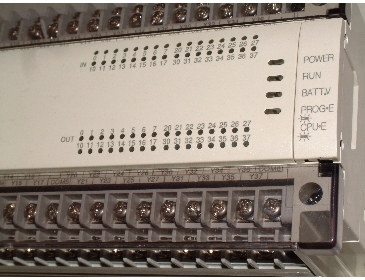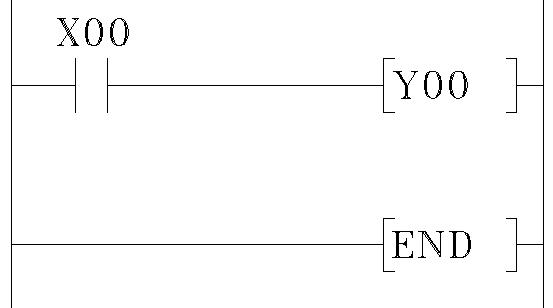The Free PLC Tutorial only from
Machine Information Systems
PLEASE NOTE: This page is under construction.

The best AND possibly the only
Free PLC tutorial on the Internet!
This electrifying Free PLC Tutorial guide will give you basic understanding, programming, wiring and using PLCs.
They say nothings free, but this Free PLC Tutorial page is. You can use our PLC pages to get your first step on the ladder, (if you'll excuse the pun, PLCs are controlled using Ladder Logic) to understanding how PLCs work and PLC programming. It's easy to get into PLCs for FREE with this tutorial!
This page forms just one part of giving you the reader a good general understanding of how PLCs work. To get the most out of PLCs you really should read all about PLC History and PLC Basics first. Don't forget the little boys with the Smallest PLCs either.
Then follow on with our additional PLC Tutorial page in conjunction with all the PLC pages featured on this website. When you're feeling bold go for the PLC Programming page to take your first steps into PLC Applications
Also, don't forget to register yourself for our PLC programming course,
"PLC Programming From the Start"
This is a self teach PLC programming beginners course that's in the making and will be available on DVD or direct download. Packed full of information to get you well on the road to programming career.
Keep informed when this becomes available with the registration form here.
So, if you want to learn how to program PLCs a good place to start is actually with a relay schematic. This schematic below is about as simple as you can get, essentially a switch turns on a relay when switched on. The relay can be switching anything you like as the power contacts will handle quite a large load.

Nice and straight forward yes, now we can use this simple example to show the operation of a PLC. We would wire the PLC into the middle between the switch and the relay, like below. Now it may look like the PLC isn't actually doing a lot, and you'd be right. But don't worry too much about that just now.

The PLC is not actually doing anything apart from making the connection between the switch and the relay. But it won't even do this with out a program in it to make it operate even this simple task.
Ironically the program to make the PLC work actually looks very simlilar to the relay wiring that it's in the middle of and now connected to above. This is just about the simplest PLC program that can be written that will actually work. The operation of this tiny program is as simple as it looks in fact, input (X01) when made, will cause the output (Y01) to switch on.

- BTW -
Although this circuit diagram and this smallest PLC program featured here above are just about as simple as can be. They are still referred to as such. Even though small and as basic as can be they are in fact still a complete schematic or PLC program in the proper sense of the word. That is acurate, complete and will actually work.
- BTW -
The complete PLC program that would be downloaded to the PLC is in fact this one below. The additinal line with the '-[END]-' symbol at the right side is a program terminator and must be there. It's job it to tell the CPU it has come to the [END] of all its program and subroutines and should now loop back around to start the complete program scan again.

With this program, in the PLC, placed in curcuit as above the whole thing will perform the same as the original electrical circuit (below), with the subtle difference that the PLC is now an integral part of it.

The subtle difference being, we can now change the operation if the circuit just by changing the program. First let's look at its operation now, the switch connected to X1 is momentary. In other words the output, as in the original electrical circuit will only switch on (or energise) while the switch is being pressed, like a door bell. Press the button the bell rings, let go of the button the bell stops.

Now I'm sure I don't need to point out that the PLC is at the moment, with the program mentioned in it, is performing as nothing more than a like piece of wire. But this is because it's programmed to do so.
Now it may surprise you to know, that without changing any of the hard wiring, the operation of this simple circuit can be altered in no less than five different ways just by modifying the program.
More to follow soon...
See the next Free PLC Tutorial page.
Find out How PLCs work.
Find out about PLC History.
Return to the PLC page.
Go from here to the Technical page.
Return from Free PLC Tutorial to Home.
Enjoy this page? Please pay it forward. Here's how...
Would you prefer to share this page with others by linking to it?
- Click on the HTML link code below.
- Copy and paste it, adding a note of your own, into your blog, a Web page, forums, a blog comment,
your Facebook account, or anywhere that someone would find this page valuable.